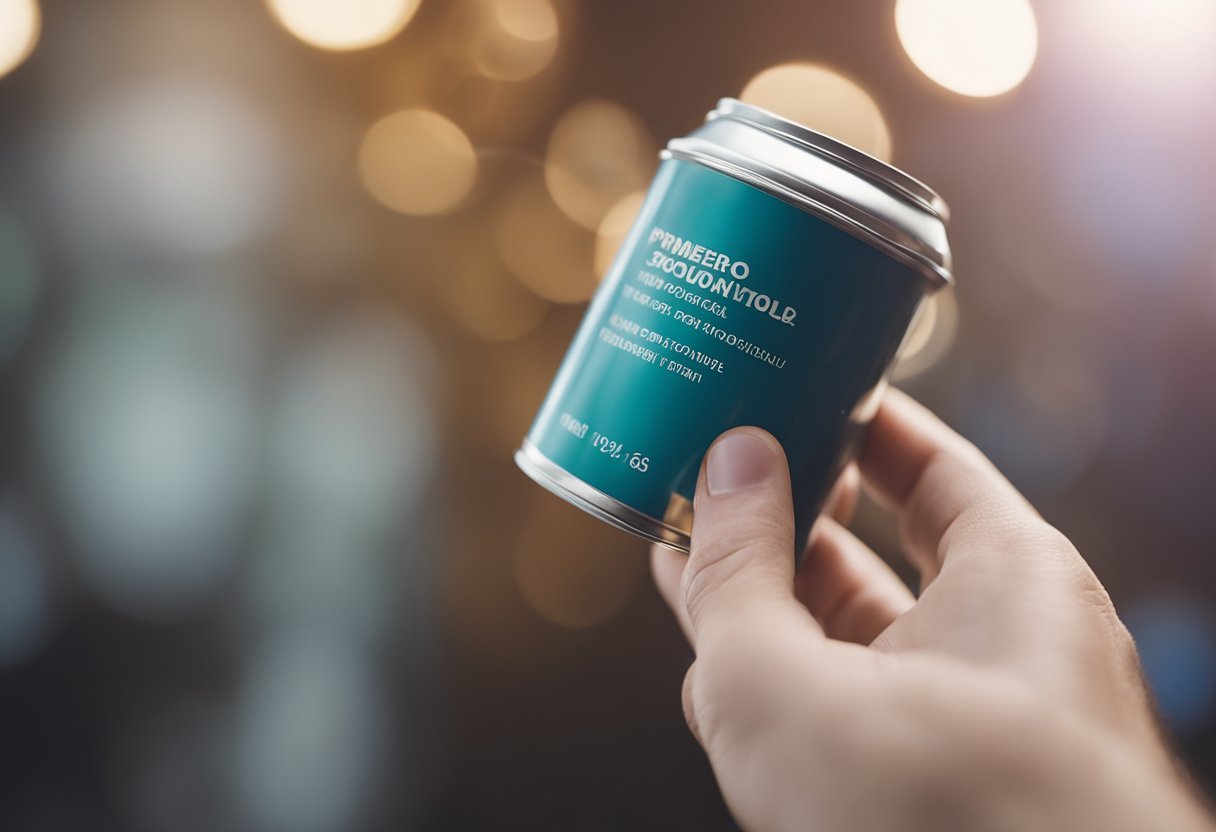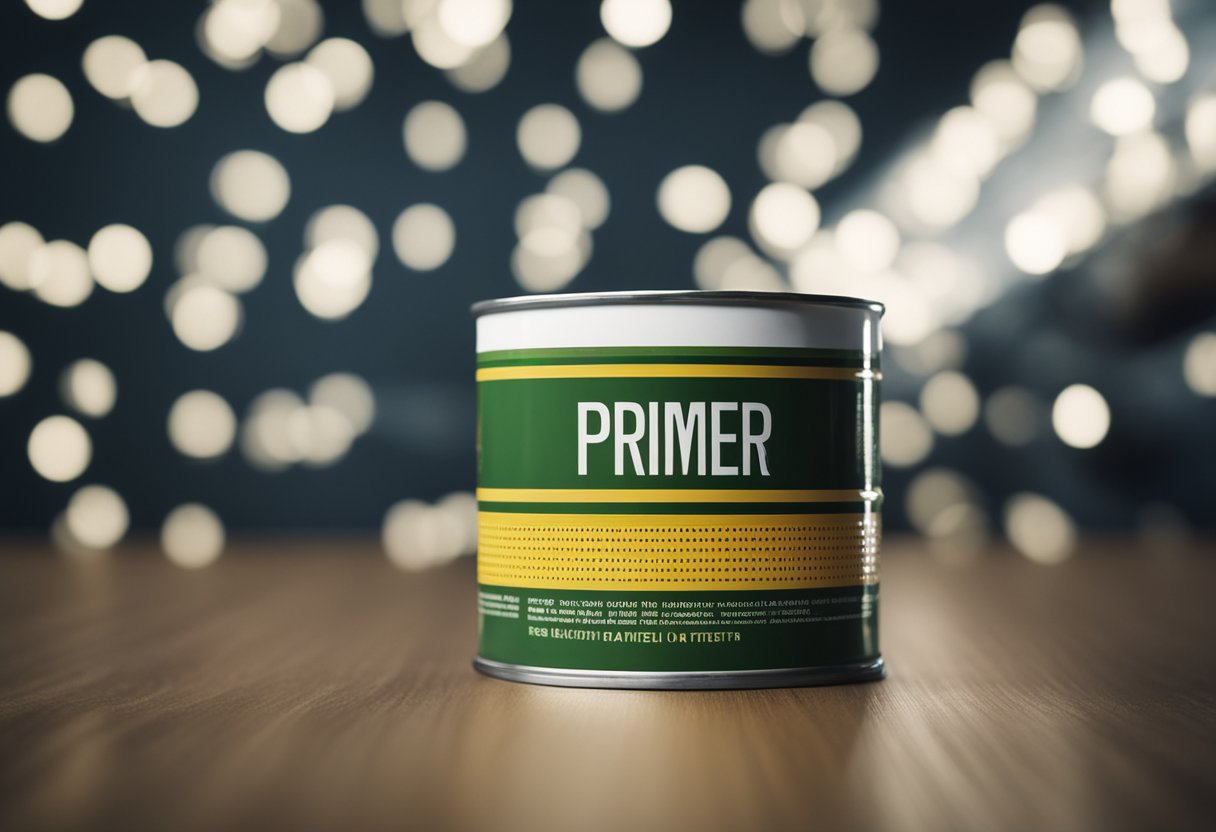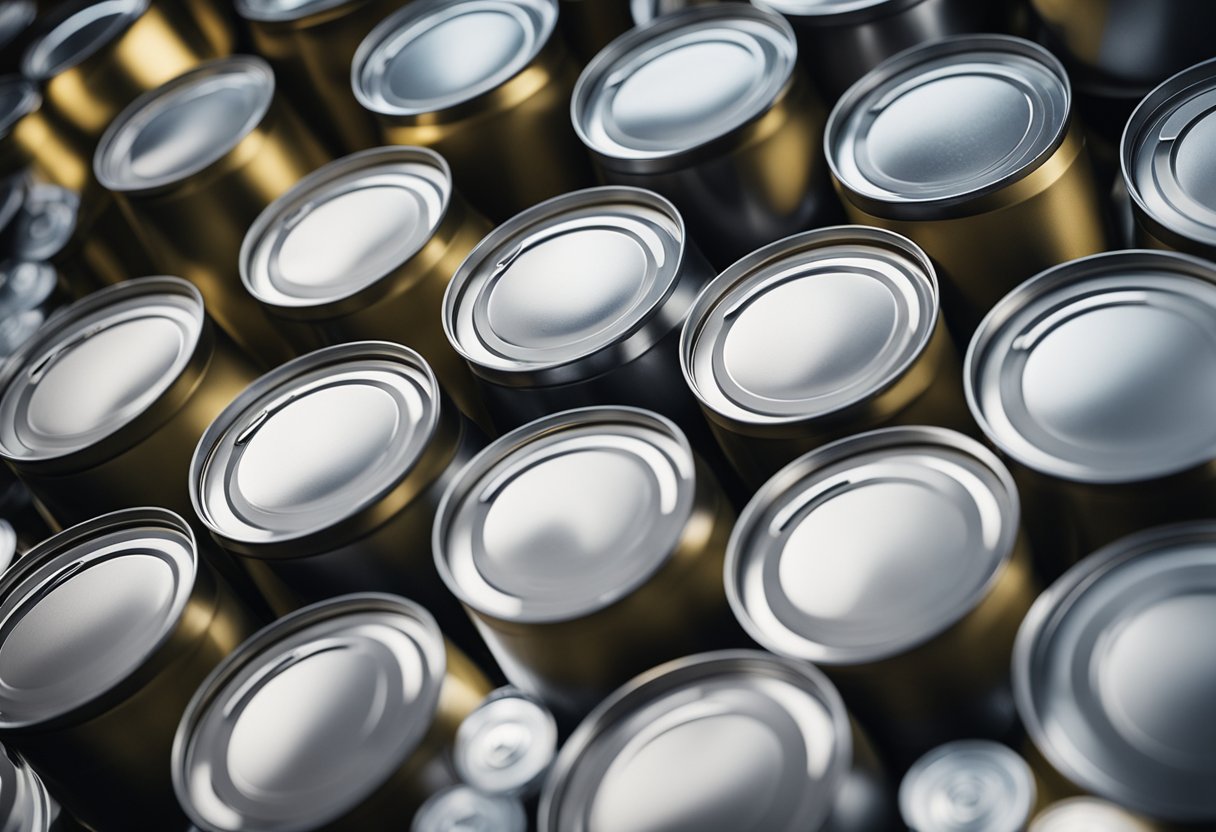As a homeowner or DIY enthusiast, you may have wondered if it’s necessary to shake primer before use. After all, it’s common knowledge that paint needs to be shaken to ensure that the pigments are well-mixed. But does the same principle apply to primer? The answer is yes, primer needs to be shaken before use.

Primer is a crucial component of any paint job as it prepares the surface for the final coat of paint or finish. It helps to create a smooth, even surface that the paint can adhere to, ensuring better coverage and durability. However, if primer is left unused for a while, the ingredients can settle at the bottom of the container, leading to an inconsistent finish. That’s why it’s important to shake primer before use to ensure that the ingredients are well-mixed and ready to do their job.
Key Takeaways
- Primer needs to be shaken before use to ensure that the ingredients are well-mixed.
- Using primer is crucial to creating a smooth, even surface that the paint can adhere to, ensuring better coverage and durability.
- Shaking primer before use helps to avoid an inconsistent finish.
Understanding Primers

As a painter, I know that primers play an essential role in ensuring a successful paint job. Primers are specially formulated coatings that are applied to surfaces before painting. They are designed to improve adhesion, enhance durability, and increase the coverage of the paint.
Primer is made up of a mixture of components, including pigments, solvents, and binders. Pigments are the colored particles that give the primer its color, while solvents are the liquids that help to dissolve the pigments and binders. Binders are the ingredients that hold the pigments together and help to create a smooth, even finish.
When you buy a can of paint, it will typically come with a primer built-in. This is known as self-priming paint. However, it’s important to note that self-priming paint is not always the best option for every surface. In some cases, a separate primer may be necessary to ensure proper adhesion and coverage.
One question that often comes up is whether or not primer needs to be shaken before use. The answer is yes, primer does need to be shaken. Shaking the primer ensures that the pigments and other components are well-mixed, which helps to ensure an even application and consistent finish.
It’s important to note that not all primers are created equal. Some primers are designed for specific surfaces, such as metal or wood, while others are designed for specific types of paint, such as oil-based or water-based. It’s important to choose the right primer for your project to ensure the best results.
In conclusion, primers are an essential component of any successful paint job. They help to improve adhesion, enhance durability, and increase coverage. When using primer, it’s important to shake the can well to ensure proper mixing. Additionally, it’s important to choose the right primer for your project to ensure the best results.
The Importance of Shaking Primers
As someone who has been in the painting industry for years, I can confidently say that shaking primers is an essential step that should not be skipped. Primers contain color particles and other ingredients that can settle at the bottom of the container when left unused for a while. Shaking the primer ensures that these particles are evenly distributed throughout the container, making it easier to apply and improving the final finish.
When primers are not shaken, lumps can form, which can lead to an uneven application and an unprofessional finish. This is especially true if the primer has been sitting on the shelf for a while. Even if the can says shaking is not necessary, it is still a good idea to do so, just to be safe.
Another reason why shaking primers is important is that it helps to prevent drying. When the color particles and other ingredients settle at the bottom of the container, they can dry out, making the primer less effective. Shaking the primer ensures that these ingredients are mixed well, so they do not dry out and remain effective.
Stirring the primer is not enough to ensure that the ingredients are evenly distributed. Shaking the primer is more effective because it creates a more vigorous mixing action, which helps to break up any lumps that may have formed and ensures that the ingredients are mixed well.
In conclusion, shaking primers is an important step that should not be skipped. It ensures that the ingredients are evenly distributed throughout the container, preventing lumps and drying, and improving the final finish. Even if the can says shaking is not necessary, it is still a good idea to do so, just to be safe.
Choosing the Right Primer
When choosing the right primer, there are several factors to consider. The type of surface you are painting, the type of paint you are using, and the condition of the surface are all important factors to consider. It is important to choose the right primer for the job to ensure the best possible finish.
There are two main types of primer: water-based and oil-based. Water-based primers are easy to clean up with soap and water, dry quickly, and are low in VOCs. They are a great choice for most surfaces, including drywall, wood, and previously painted surfaces. Oil-based primers are more durable and provide better adhesion to difficult surfaces such as metal, glossy surfaces, and bare wood. They also have a longer drying time and require mineral spirits for clean up.
One popular brand of primer is Kilz. Kilz offers a variety of primers for different surfaces and conditions, including water-based and oil-based options. Their products are available at most hardware stores and are known for their quality and effectiveness.
Another type of primer is shellac-based primer. This type of primer is great for blocking stains and odors, and for sealing difficult surfaces such as knots in wood. Shellac-based primer is also a good choice for sealing water and smoke damage.
When choosing a primer, it is important to read the label carefully. The label will provide information about the surface the primer is designed for, the type of paint it is compatible with, and any special instructions for use.
In conclusion, choosing the right primer is an important step in achieving a professional-looking paint job. Consider the surface you are painting, the type of paint you are using, and the condition of the surface when selecting a primer. Water-based and oil-based primers are the most common types, but shellac-based primer is also a good choice for certain situations. Kilz is a popular brand of primer that offers a variety of options for different surfaces and conditions.
Primer Application Techniques

When it comes to using primer, it is important to follow the right application techniques to achieve the best results. Here are some tips to keep in mind:
1. Preparation
Before applying the primer, clean the surface thoroughly to remove any dirt, dust, or debris. This will help the primer to adhere better to the surface and ensure a smooth coating. You can use a damp cloth or a mild detergent to clean the surface.
2. Application
Apply the primer in thin, even coats using a brush, roller, or spray gun. Avoid over-applying the primer, as this can lead to drips, runs, or uneven coverage. It is better to apply multiple thin coats of primer than one thick coat.
3. Drying Time
Allow the primer to dry completely between coats and before applying the final coat of paint. The drying time will depend on the type of primer and the temperature and humidity of the environment. Check the manufacturer’s instructions for specific drying times.
4. Sanding
After the primer has dried, sand the surface lightly with fine-grit sandpaper to smooth out any rough spots or imperfections. This will also help the paint to adhere better to the surface.
5. Coats of Primer
In some cases, you may need to apply more than one coat of primer to achieve the desired coverage. This is especially true if you are painting over a dark or heavily stained surface. Apply each coat of primer in thin, even layers and allow each coat to dry completely before applying the next.
By following these primer application techniques, you can ensure a smooth, even coating and a professional-looking finish for your painting project.
How Primers Enhance Surfaces

As a professional painter, I have learned that primers are essential to achieving a smooth and uniform surface. Primers are specially designed to enhance surfaces by hiding flaws, filling in pores and imperfections, and creating a strong foundation for the paint to adhere to.
One of the primary benefits of using a primer is that it can help to even out patchy or uneven surfaces. Primers are formulated to fill in any cracks or crevices in the surface, creating a smooth finish that is ready for paint. This is particularly important when dealing with porous surfaces like brick or concrete, which can be difficult to paint without a primer.
Another benefit of using a primer is that it can help to prevent bleed-through. When painting over a previous color, it is important to use a primer to prevent the old color from bleeding through and affecting the new coat of paint. This is especially important when dealing with bright or bold colors, which can be more prone to bleed-through.
Primers can also help to prevent peeling, blistering, and cracking. By creating a strong foundation for the paint to adhere to, primers can help to ensure that the paint stays in place for years to come, even in harsh elements. This is particularly important when painting exterior surfaces, which are exposed to the elements and can be more prone to damage.
Finally, primers can help to enhance the finish of the paint. By filling in pores and imperfections, primers can create a smooth and uniform surface that is ready for makeup. This can help to prevent creasing and enhance the overall appearance of the paint.
In conclusion, using a primer is an essential step in any painting project. Whether you are painting a porous surface, dealing with previous color bleed-through, or simply looking to create a smooth and uniform finish, a primer can help to enhance the surface and ensure that your paint job lasts for years to come.
Primer Myths Debunked
As a professional painter, I have come across several myths surrounding primer. In this section, I will debunk some of the most common myths and provide you with accurate information.
Myth: Primer is Just Paint Without Color
This is a common misconception. Primer and paint are two different formulas. Primer is designed to adhere to surfaces and provide a smooth, consistent base for paint to adhere to. Paint, on the other hand, is designed to add color and protect the surface. It is essential to use primer before painting to ensure the paint adheres properly and looks its best.
Myth: Primer Doesn’t Need to Be Shaken
It is a common myth that primer doesn’t need to be shaken before use. However, this is not true. Primer contains color particles and other ingredients that can settle at the bottom of the container when left unused for a while. Shaking the container before use ensures that the primer is evenly mixed and ready for application.
Myth: All Primers are the Same
Not all primers are the same. There are different types of primers available, each designed for specific surfaces and purposes. For example, some primers are designed for use on wood, while others are designed for metal or concrete. It is essential to choose the right primer for your project to ensure the best results.
Myth: Primer Can Cover Up Grease, Ink, and Mildew
Primer is not designed to cover up grease, ink, or mildew. These substances must be removed before applying primer. If you apply primer over these substances, they will continue to grow and spread, causing damage to the surface.
Myth: Glue Can Replace Primer
Glue cannot replace primer. While glue may work as a temporary solution, it is not designed to adhere to surfaces like primer. Primer is specifically formulated to adhere to surfaces and provide a smooth, consistent base for paint to adhere to.
Myth: Primer Can Remove Odors
Primer is not designed to remove odors. If you have an odor problem, you need to address the source of the odor before applying primer. Applying primer over the odor will not solve the problem.
Myth: All Primers Contain VOCs
Not all primers contain VOCs (volatile organic compounds). There are low-VOC and no-VOC primers available that are environmentally friendly and safe to use. If you are concerned about VOCs, look for a low-VOC or no-VOC primer.
In conclusion, it is essential to use primer before painting to ensure the best results. There are several myths surrounding primer, but by debunking them, you can make an informed decision about which primer to use for your project.
The Role of Primer in a Paint Job
As a professional painter, I always recommend using primer before applying the topcoat. Primer is a type of paint that is specifically formulated to bond with the surface and create a smooth, uniform base for the topcoat. It is an essential part of any paint job, providing a solid foundation for the paint to adhere to.
One of the primary functions of primer is to create a bond between the surface and the topcoat. Without primer, the topcoat may not adhere properly to the surface, resulting in an uneven finish that is prone to peeling and flaking. Primer helps to create a strong bond between the surface and the topcoat, ensuring that the paint will last longer and look better.
Another important role of primer is to seal the surface and prevent the paint from bleeding through. Some surfaces, such as wood and drywall, are porous and can absorb the paint, causing it to bleed through and discolor the topcoat. Primer helps to seal the surface and prevent this from happening, ensuring that the paint looks clean and even.
Additionally, primer can help to improve the coverage and durability of the topcoat. By providing a uniform base, primer can help to reduce the number of coats needed to achieve full coverage, saving time and money. It can also help to improve the durability of the paint, making it more resistant to wear and tear.
Finally, primer can also help to improve the quality of the paint job by enhancing the color and finish of the topcoat. Some primers are formulated with special ingredients that can improve the adhesion and color of the topcoat, resulting in a more vibrant and long-lasting finish.
Overall, the role of primer in a paint job is crucial. It helps to create a strong bond between the surface and the topcoat, seals the surface to prevent bleeding, improves coverage and durability, and enhances the color and finish of the topcoat. By using primer, you can ensure that your paint job looks professional and lasts longer.
Frequently Asked Questions

Do I need to shake primer before painting on wood?
Yes, it is recommended to shake primer before painting on wood. Primer contains color particles and other ingredients that can settle at the bottom of the container when left unused for a while. Shaking the primer before use will ensure that the ingredients are thoroughly mixed and that the primer is applied evenly.
How long should I stir primer before use?
It is recommended to stir primer for at least two to three minutes before use. This will ensure that the ingredients are mixed thoroughly and that the primer is applied evenly.
Is it necessary to shake Kilz primer?
Yes, it is necessary to shake Kilz primer before use. Kilz primer, like other primers, contains ingredients that can settle at the bottom of the container when left unused for a while. Shaking the primer before use will ensure that the ingredients are thoroughly mixed and that the primer is applied evenly.
How many coats of primer should I apply?
It is recommended to apply one to two coats of primer, depending on the surface being painted and the type of paint being used. Applying too many coats of primer can result in a thick, uneven surface that can be difficult to paint over.
Should I stir Kilz primer before use?
Yes, it is recommended to stir Kilz primer before use. This will ensure that the ingredients are thoroughly mixed and that the primer is applied evenly.
Should primer sealer be shaken before use?
Yes, it is recommended to shake primer sealer before use. Primer sealer, like other primers, contains ingredients that can settle at the bottom of the container when left unused for a while. Shaking the primer sealer before use will ensure that the ingredients are thoroughly mixed and that the primer sealer is applied evenly.

Hi, I’m Sal Muller of Tooltrip.com. My DIY experience led me to understand essential power tools for home projects. Tooltrip.com guides enthusiasts and professionals in choosing right tools for any job. I provide concise top tool reviews for easier, efficient DIY.

